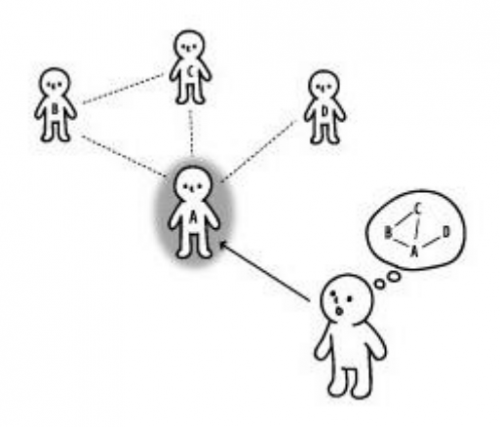Hidden Connections/OG
| Hidden Connections | |
| Contributors | Takashi Iba, Toko Miyake, Miyuko Naruse, Natsumi Yotsumoto |
|---|---|
| Last modification | May 15, 2017 |
| Source | Iba, Miyake, Naruse & Yotsumoto (2009)[1]; Iba (2010)[2] |
| Pattern formats | OPR Alexandrian |
| Usability | |
| Learning domain | |
| Stakeholders | |
When you are studying
When you are making research
When you are reading a book
When you need to get a new view or idea
When you choose classes or seminars
You want to see things from a new point of view for a fruitful research, but you don't know a concrete way.
- • All the individuals have connections with one another.
- • Existing classification is just a criterion that someone had made.
- • It is necessary to find new meaning of connection among things in order to acquire a new point of view.
- • Increasing the number of elements brings about the difficulty to grasp a whole due to drastic increase of connections among them.
Find hidden connections among the things to get inspiration.
- • Find hidden connections according to words that are used over the discipline. Or seek hidden connections among researchers who are referred in their papers and books. In the case of campus life, look for unexpected connections by thinking about the relationships among different types of classes that one professor has.
- • Think why things that seem not to be related have connections one another and add your own logic to it. After that, think about other elements as well, and imagine something new.
- • It is easier to grasp a whole of connections by drawing the map if there are lots of elements.
You can see the world from a different point of view. The new ideas may come to your mind.
One day, Kazeto went to a lecture of his favorite professor. That lecture stimulated Kazoo's interests and he was so satisfied.
Kazeto spoke to a lady next to him, and he noticed that she has been studying and doing a research in fields which is completely different from Kazeto. This experience made Kazeto notice that the things which seem to be different can have connections, and that, this kind of things may often happen.
Through this experience, Kazeto realized these two different fields are related each other with “hidden connection”.
You would suddenly get to figure out the Hidden Connections (Hidden Connections). This situation might be caused by Field Diving (Field Diving) or Weak-Linked Encounter (Weak-Linked Encounter). Also, it is important to keep the wideness in T-Shape Learning (T-Shape Learning), because you can't be aware of the connections beyond the discipline if you don't know them. You will feel Academic Excitement (Academic Excitement) when you find a connection among things, which is different from the existing classification.
References
- ↑ Iba, T., Miyake, T., Naruse, M., & Yotsumoto, N. (2009).Learning patterns: A pattern language for active learners. In Proceedings of the 16th Conference on Pattern Languages of Programs (PLoP 2009).
- ↑ Patlet mentioned in Iba, T. (2010). Designing a Pattern Language for Creative Learners.
